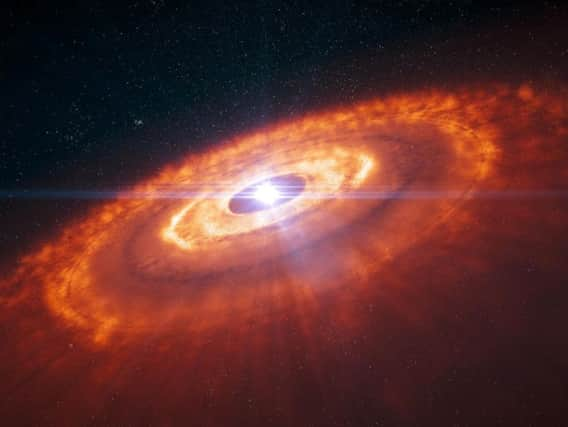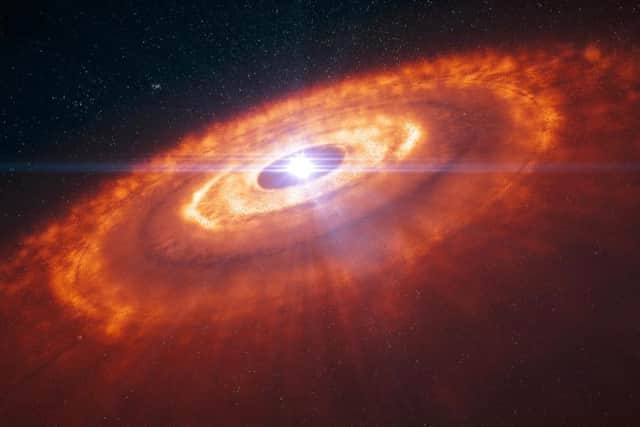Leeds astronomers discover rare molecule


The scientists from the University of Leeds used one of the most advanced radio telescopes in the world to spot a molecule in the dust and gas disc around a young star.
Advertisement
Hide AdAdvertisement
Hide AdRecent observations of these discs have perplexed astronomers because they did not seem to contain enough gas and dust to create the planets the scientists could see.


However, using the Atacama Large Millimetre/submillimetre Array (ALMA) - high in the Atacama Desert in Chile, the team discovered that a gas molecule was responsible for the star’s heavy weight.
ALMA is able to observe light that is invisible to the naked eye, allowing the astronomers to view what is known as the “cold universe” and detect an extremely faint signal showing the existence of a rare form of carbon monoxide - known as an isotopologue.
Advertisement
Hide AdAdvertisement
Hide AdAlice Booth, a PhD researcher at Leeds who led the study, said: “Our new observations showed there was between two and six times more mass hiding in the disc than previous observations could measure.
“This is an important finding in terms of the birth of planetary systems in discs – if they contain more gas, then they have more building material to form more massive planets.”
She added: “Our work shows the amazing contribution that ALMA is making to our understanding of the universe. It is helping build a more accurate picture of the physics leading to the formation of new planets. This of course then helps us understand how the solar system and earth came to be.”
The star, named HD 163296, is 330 light years from Earth and formed over the last six million years.
The study – The first detection of 13C17O in a protoplanetary disk: a robust tracer of disk gas mass – was published yesterday in Astrophysical Journal Letters.